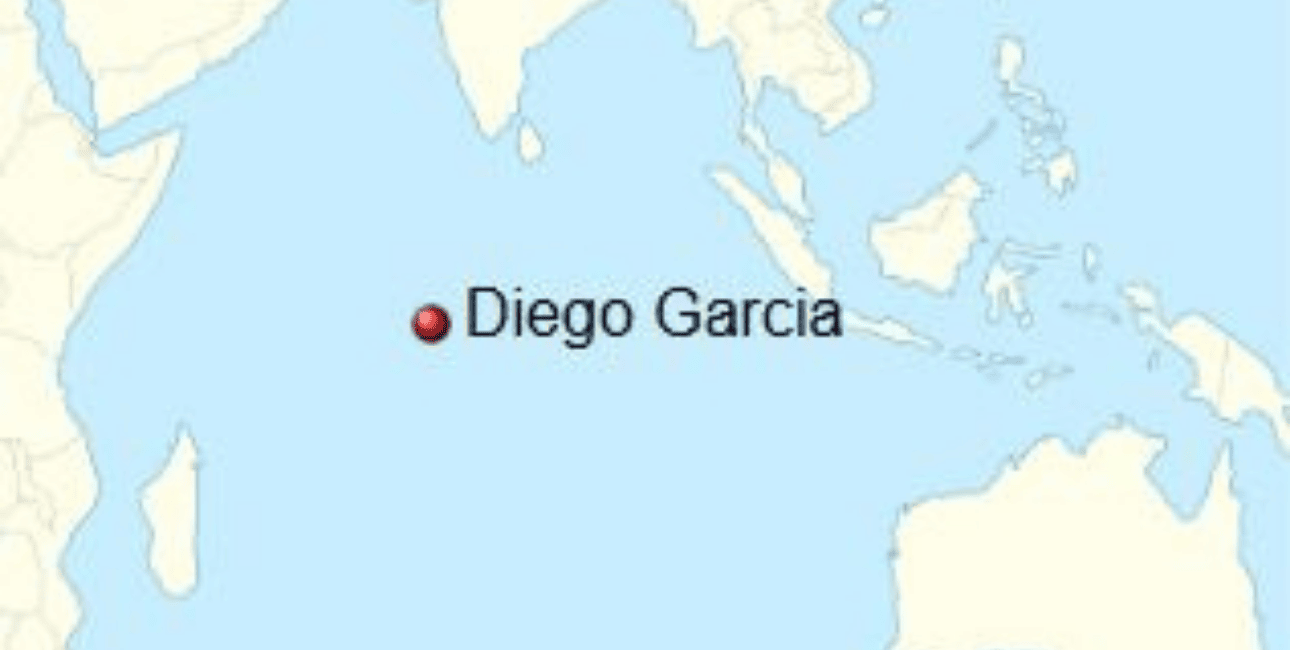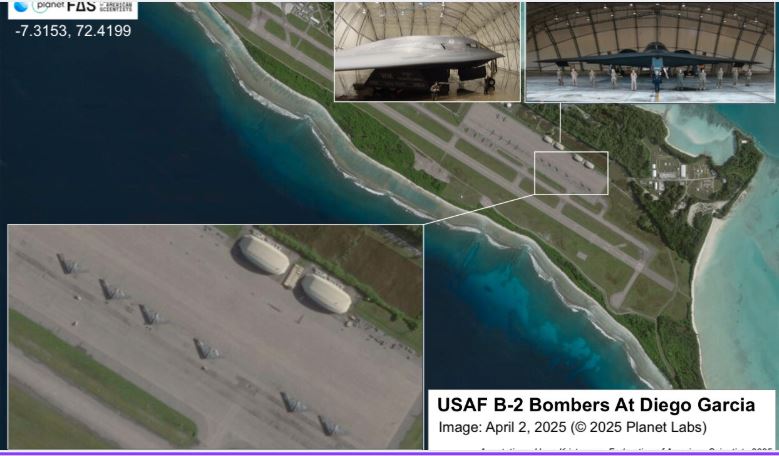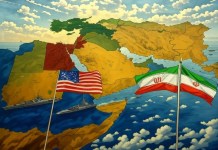U.S. President Donald Trump has approved an agreement between the United Kingdom and Mauritius regarding the Chagos Islands. This decision, finalized on April 1, will see Britain transfer sovereignty over the Chagos Islands to Mauritius.
However, the UK will retain control of the largest island, Diego Garcia, by leasing it back for a 99-year term. This deal, the result of months of talks, has now reached its final stages, with both countries set to sign the treaty soon.
The Chagos Islands are located in the Indian Ocean and were once part of the British colony of Mauritius. The UK separated the islands from Mauritius in the 1960s, and the native Chagossians were forcibly removed to make way for a U.S. military base on Diego Garcia.
Since then, the base has become crucial for military operations, particularly for the U.S. and the UK, including counterterrorism missions and global surveillance.
The approval of this deal follows significant talks with the U.S., which holds a strategic interest in Diego Garcia due to the military base. The plan follows an International Court of Justice (ICJ) ruling in 2019 that said that the archipelago belongs to Mauritius.
However, the deal has sparked controversy. Critics in the U.S. worry that transferring sovereignty could weaken Western influence in the region, potentially allowing China to gain a stronger foothold in the Indian Ocean.
There has been criticism in the UK, with some arguing that Britain is giving up a strategically valuable territory unnecessarily.

The Chagos Islands, once considered remote and desolate, have become a geopolitical flashpoint, as their importance to global security has only grown over time.
Controversial History
The Chagos Islands were first settled by the French in the 18th century, but after the Napoleonic Wars, Britain took control in 1814. The islands were part of the British colony of Mauritius until the 1960s. At that time, Mauritius was granted independence, but the British decided to split off the Chagos Islands, forming the British Indian Ocean Territory (BIOT).
The reason for the separation? A strategically located military base on Diego Garcia. In the early 1960s, the UK and the U.S. began discussing the creation of a military installation on Diego Garcia, located roughly halfway between Africa and Asia. It was an ideal location for a forward-deployed military base capable of supporting operations in the Middle East and beyond.
This decision to build a military base was made despite significant opposition from the native Chagossians, who had lived on the islands for generations.
Between 1968 and 1973, the British forcibly expelled over 1,500 Chagossians from their homes, sending them to Mauritius and the Seychelles.
The UK government has consistently argued that the expulsions were necessary for the region’s security. The U.S. military base on Diego Garcia, established in 1966, has become one of the most important military installations for the U.S. and the UK, providing logistical support and staging grounds for military operations worldwide.
But despite this, the expulsion of the Chagossians has been a source of international controversy.
In 2019, the United Nations’ International Court of Justice (ICJ) ruled that the UK’s decision to separate the Chagos Islands from Mauritius was illegal. However, the UK government has largely ignored the ruling, arguing that the islands’ sovereignty is still in dispute.
Military Value
The story of Diego Garcia’s transformation from a remote and desolate island to a cornerstone of global military operations is a product of its location.
Nestled in the heart of the Indian Ocean, Diego Garcia is situated at the crossroads of critical maritime routes between Africa, the Middle East, and Asia. Its proximity to the Strait of Hormuz, a vital oil shipping route, adds further value to its strategic position.
The U.S. military base on Diego Garcia has long been a vital asset for the United States and the UK, facilitating a wide range of military activities.
The base serves as a key logistics hub, supporting naval operations, air missions, and intelligence gathering. Its airfield can handle long-range bombers, and its harbor can accommodate large naval vessels.
Diego Garcia has been involved in various military operations, including the Gulf War, the Iraq War, and the war in Afghanistan. Its role in counterterrorism efforts in the Middle East and North Africa has made it a central player in the U.S. military’s operations. The base also hosts Maritime Pre-Positioning Ships, which are crucial for rapid deployment during conflicts.
One key reason for Diego Garcia’s enduring importance is its ability to support long-range strike capabilities. The island’s airfields are equipped to handle bombers and surveillance aircraft that can be deployed quickly in times of crisis. The base also serves as a key node in the U.S. military’s global network of surveillance and intelligence-gathering stations.
The U.S. military has made significant investments in Diego Garcia, turning it into one of the most sophisticated military installations in the world. It is a strategic asset not only for the U.S. but also for the UK, which shares defense responsibilities with the U.S. in the region.
This is particularly significant as China’s naval activities, including the establishment of bases like the one in Djibouti, have raised concerns among nations about Beijing’s ambitions in the Indian Ocean.
The H-6 bomber, a strategic asset of the People’s Liberation Army Air Force (PLAAF), projects China’s military power in the region. A modernized version of the Soviet Tu-16, the H-6 is capable of carrying long-range cruise missiles and conducting aerial refueling, enhancing its operational range.
Iranian Threat
Diego Garcia’s military significance has only grown amid rising tensions in the Middle East, particularly concerning Iran.
The U.S. and its allies have long viewed the base as a critical deterrent against potential Iranian aggression, especially as Tehran continues to advance its rapidly evolving nuclear capabilities program that threatens to hurt U.S. oil interests.
Iran’s increasing influence in conflicts across the Middle East has only deepened Western concerns over its strategic ambitions. Iranian military officials have repeatedly warned of preemptive strikes on U.S. bases, including Diego Garcia, in response to escalating hostilities.
With its advanced surveillance systems, long-range bombers, and intelligence capabilities, the island remains central to U.S. and UK efforts to contain Tehran’s military reach. Iranian naval forces have also stepped up their presence near key maritime chokepoints like the Strait of Hormuz, heightening fears over threats to global shipping lanes. This has reinforced Diego Garcia’s role in securing vital trade routes and maintaining military dominance in the region.
Iran possesses an extensive arsenal of ballistic missiles, including the Khorramshahr and Sejjil missiles, which have the range to target U.S. bases in the region, including Diego Garcia. The Islamic Revolutionary Guard Corps (IRGC) has also significantly expanded its drone warfare capabilities, using them effectively in various regional conflicts.
Tehran has repeatedly demonstrated its ability to strike U.S. and allied forces via proxy militias in Iraq, Lebanon, and Yemen. The growing sophistication of Iran’s missile program has raised alarms in Washington, with officials warning that Tehran’s ability to deploy high-precision weapons could shift the regional balance of power.
Diego Garcia has played a critical role in U.S. military strategy against Iran. In moments of heightened tension, the base has served as a launchpad for B-2 stealth bombers, which are capable of precision strikes deep within Iranian territory.
Iran has reportedly considered the possibility of striking Diego Garcia. Iranian military officials have suggested that their missiles could potentially reach Diego Garcia, which is located approximately 3,795 kilometers from Iran.
The base’s strategic location ensures that the U.S. retains the capability to carry out rapid-response operations if necessary.
In a phone interview on March 30, Donald Trump warned of severe military action if an agreement was not reached with Iran.
“If they don’t make a deal, there will be bombing. It will be a bombing the likes of which they have never seen before,” he stated.
The possibility of military action against Iran has once again placed Diego Garcia at the center of U.S. military strategy in the region.
Presence of B-2 Bombers
The island’s strategic location makes it an ideal staging ground for military operations targeting Iran’s nuclear infrastructure, as well as for maintaining a military presence in the region to deter further Iranian influence.

Recently, the US has forward deployed about one-third of its B-2 stealth bombers to Diego Garcia, or about half the B-2s considered fully operational at any given time. A Planet Labs satellite image taken on April 2 shows six B-2 stealth bombers on the apron alongside six refueling tankers.
The B-2 can deliver both conventional and nuclear munitions, with a payload capacity exceeding 40,000 pounds. Four General Electric F118-GE-100 turbofan engines power it, each providing 17,300 pounds of thrust.
It is uniquely capable of deploying the GBU-57A/B Massive Ordnance Penetrator (MOP), a formidable bunker-busting bomb.
The B-2’s operational range is also impressive, capable of flying over 6,000 nautical miles unrefueled and extending to more than 10,000 nautical miles with a single mid-air refueling. It can operate at altitudes of up to 50,000 feet, ensuring flexibility in mission planning
It can now strike the Houthis in Yemen or even Iran; with its bunker-bursting capabilities, it can even attack the underground nuclear facilities of Iran.
As geopolitical tensions rise in the Middle East, particularly with Iran, the island’s role as a vital US and UK military hub is cemented, ensuring its continued influence on regional security and global power dynamics for decades to come.
- By: ET NewsDesk
- Contact: editor (at) eurasiantimes.com




